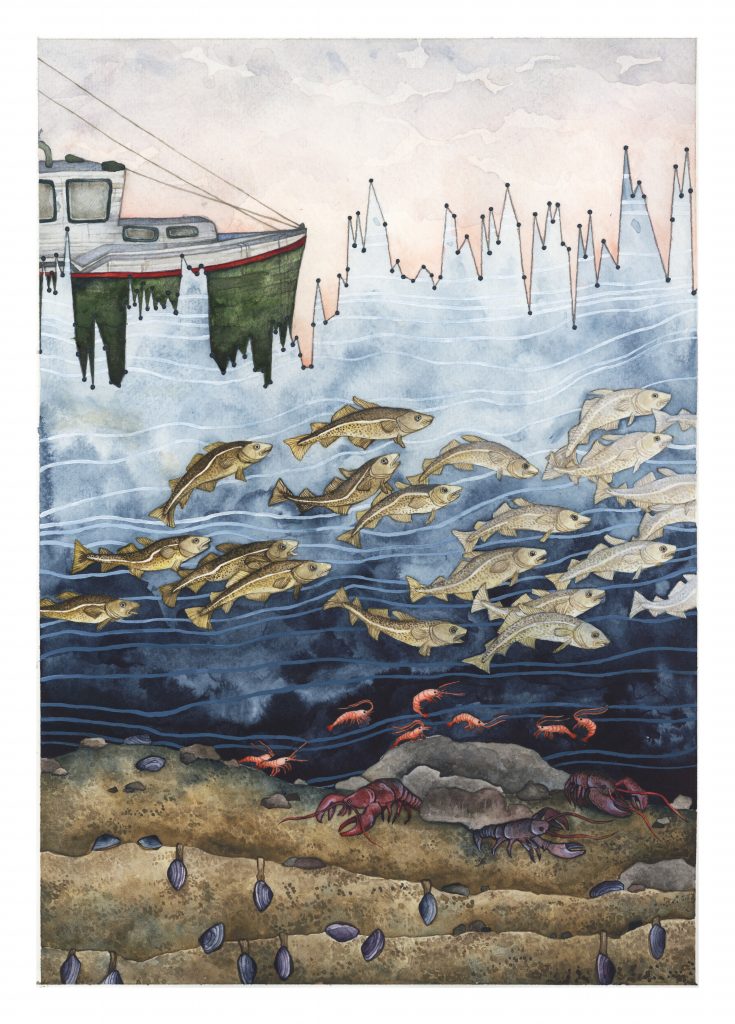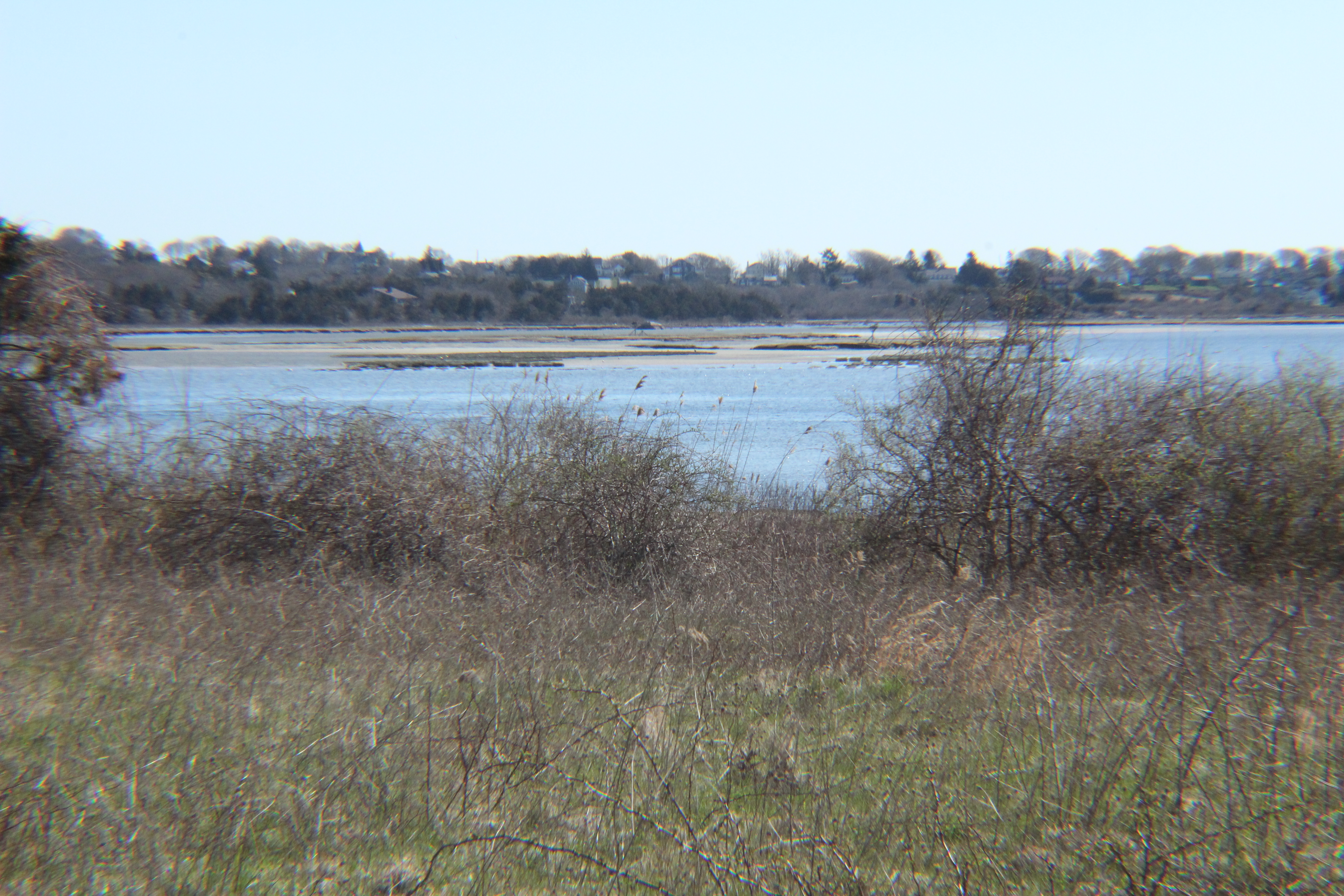Episode 94

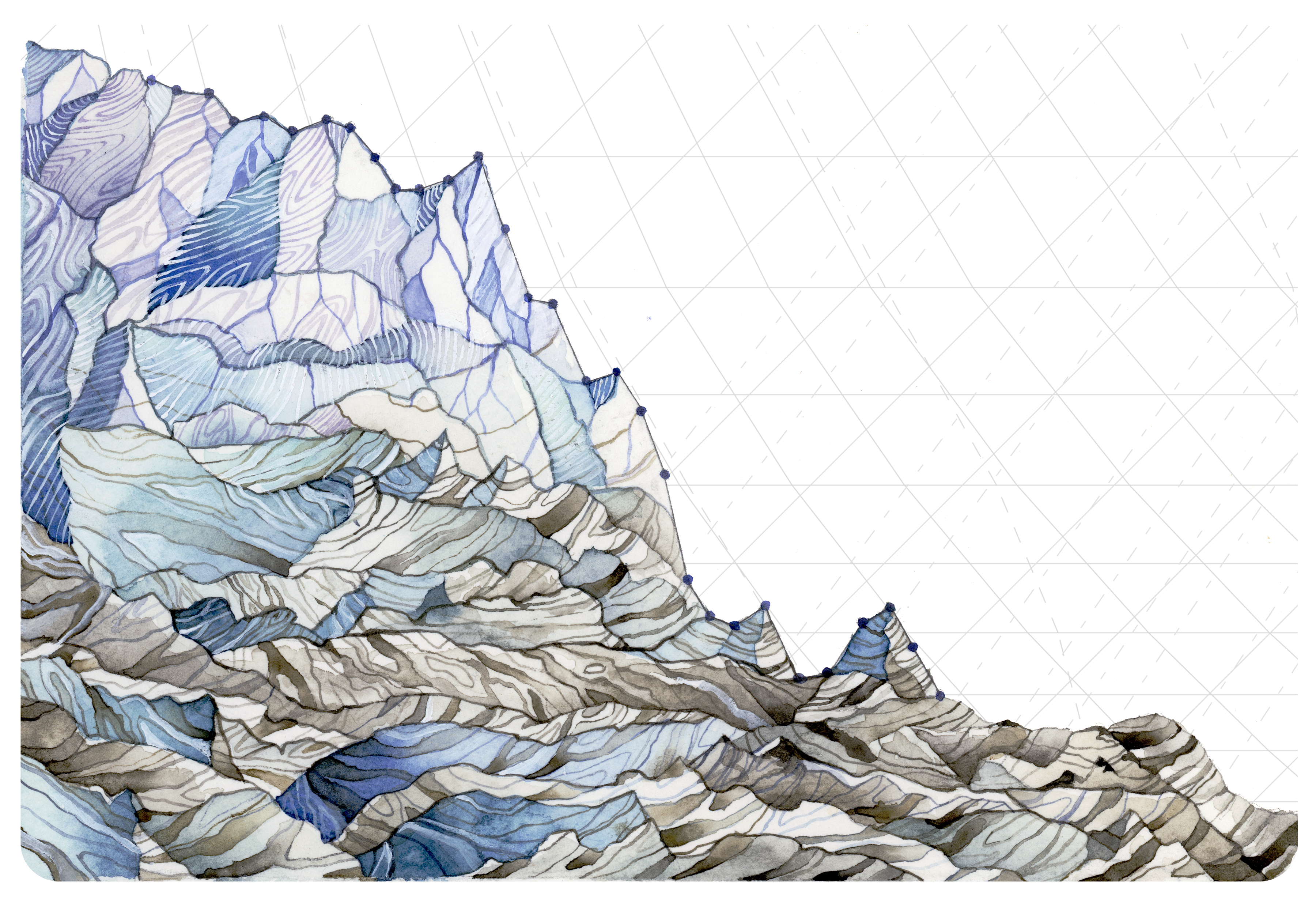 This week on NEXT, we’re focusing on the many ways climate change and rising sea levels are affecting New England. We talk with climate scientists, urban resilience experts, and artists about how they’re grappling with these questions. Plus, we’ll visit eroding salt marsh islands, rivers and streams that are getting saltier, and a city that’s bearing the brunt of climate worries and industrial infrastructure. It’s NEXT.
This week on NEXT, we’re focusing on the many ways climate change and rising sea levels are affecting New England. We talk with climate scientists, urban resilience experts, and artists about how they’re grappling with these questions. Plus, we’ll visit eroding salt marsh islands, rivers and streams that are getting saltier, and a city that’s bearing the brunt of climate worries and industrial infrastructure. It’s NEXT.
Image above is “Decreasing in Glacier Mass Balance” by Jill Pelto. Courtesy of Jill Pelto
How Rising Sea Levels Will Affect New England

The large stones seen here were once the foundation of a garrison house that stood in the early 17th century near Great Bay. Photo by Jason Moon for NHPR
We speak with Paul Andrew Mayewski, the Director of the Climate Change Institute at the University of Maine, about how rising sea levels and climate change will impact New England.
Maine Artist Integrates Data into Her Art
Jill Pelto, artist and Masters student at the University of Maine, joins us to tell us why she integrates data in her art, and what she hopes to achieve by combining these two worlds. She has provided her art to us for this post. You can see more of her art on her website, Twitter, or in her Etsy shop.
Vulnerable Communities and Climate Change
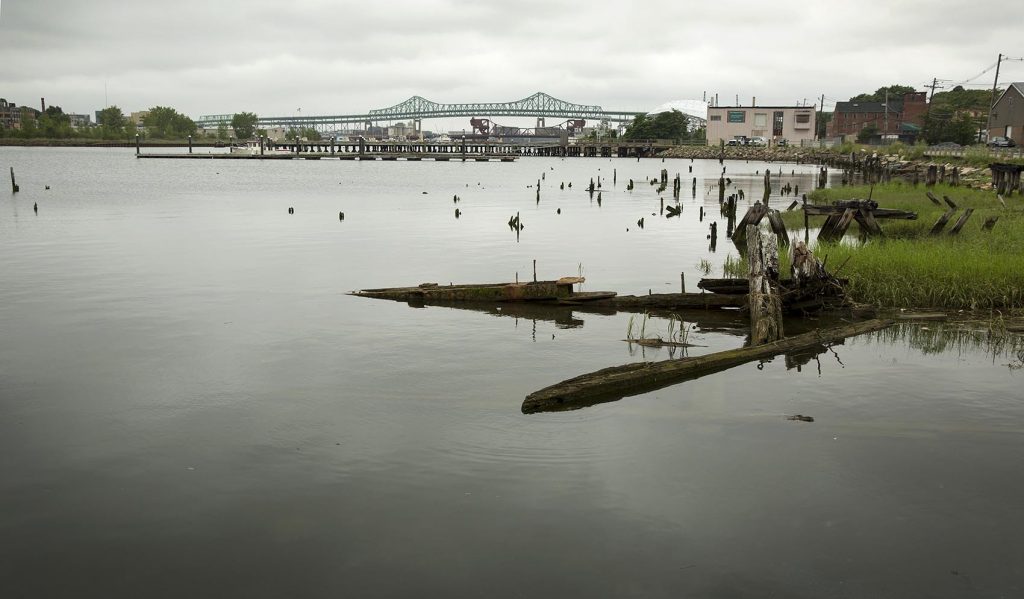
Several industrial sites are located on the Chelsea Creek in Chelsea, Massachusetts. Photo by Robin Lubbock for WBUR
Low-income communities and communities of color are disproportionately affected by the consequences of climate change: think New Orleans and Hurricane Katrina. These areas suffer from poor air quality, increasing temperatures, and extreme weather. In many of those same communities, residents already live among health hazards like fuel storage units and the toxic remains that come with them. In the city of Chelsea, Massachusetts, residents bear these burdens while much of New England benefits. WBUR’s Shannon Dooling reports.
Creating Resilient Communities

Sandbags hold back water at the entrance to the Aquarium MBTA station during the March 2 nor’easter. Photo by Robin Lubbock for WBUR
Cities and towns all over New England and the world are working to create resilient communities that can survive the effects of climate change and rising seas. We speak with Dr. Atyia Martin, the former Chief Resilience Officer for the city of Boston, about how cities can adapt, and protect their most vulnerable communities along the way.
GMRI Works to Educate Communities About Rising Sea Levels

The Gulf of Maine Research Institute teaches a course about rising sea levels. Photo by Lily Tyson for the New England News Collaborative
The Gulf of Maine Research Institute and the National Oceanic and Atmospheric Administration are teaming up to give 90-minute interactive classes about sea level rise to anyone who is interested. The New England News Collaborative’s Lily Tyson attended a recent class in Portland. Click here to see a map of how sea level rise will affect Maine.
Salt Marshes at Risk
New England has already started experiencing the effects of climate change: sea levels are rising, water temperatures are warming and major storms are becoming stronger. All of this has caused Rhode Island and South Coast officials to wonder, are we prepared for the consequences of these changes? Rhode Island Public Radio’s Environment Reporter Avory Brookins investigates that question through a new series called “Ready or Not” to reveal who and what are the most vulnerable to the effects of climate change, and what more can be done to prepare. In her first series, she travels to the Westport River where salt marsh islands are rapidly disappearing, a transformation scientists link to climate change.
Freshwater Increasingly Saline and Alkaline
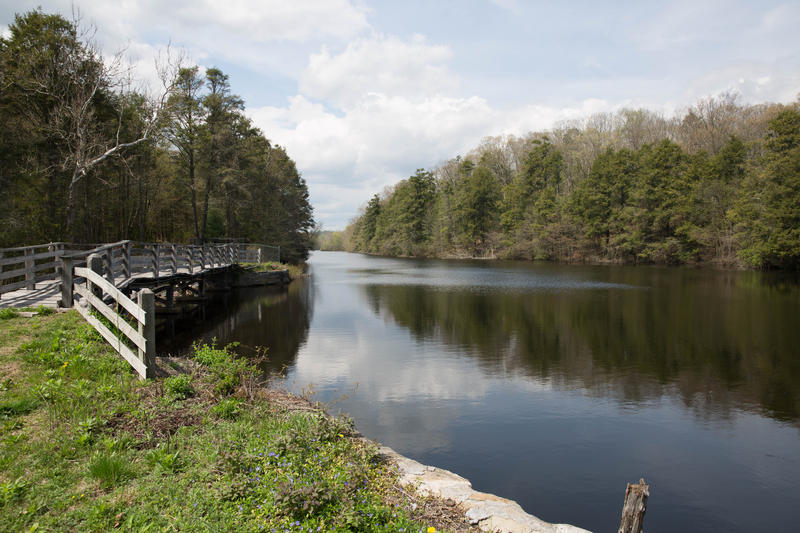
This portion of the Menunketesuck River splits itself between Westbrook and Clinton. It’s only a few miles from Long Island Sound, and even closer to a nearby highway. But among the trees and water, all that noise feels so far away. Photo by Patrick Skahill for Connecticut Public Radio
Bodies of fresh-water around the United States are becoming increasingly salinated, and increasingly alkaline. And a new study published by a group of scientists show these two issues are linked and caused by specific actions that humans are taking. We speak with Gene Likens, a co-author on the recent study, and a distinguished research professor of Ecology and Evolutionary Biology at the University of Connecticut.
“Heads of Tide” Show Unique Ecosystem

Steve Gephard, a supervising fisheries biologist with the state Department of Energy and Environmental Protection, in front of a fishway and eel pass. His agency manages on the Menunketesuck River. Photo by Patrick Skahill for Connecticut Public Radio
In nature, fascinating biology can be found “on the edges” — intermingled habitats where biodiversity can flourish. Connecticut Public Radio’s Patrick Skahill recently traveled to one such edge — what’s called a “head of tide.”
About NEXT
NEXT is produced at Connecticut Public Radio
Host: John Dankosky
Produced with help this week from Lily Tyson and Ali Oshinskie
Digital Producer: Carlos Mejia
Executive Producer: Catie Talarski
Contributors to this episode: Shannon Dooling, Lily Tyson, Patrick Skahill, Avory Brookins
Music: Todd Merrell, “New England” by Goodnight Blue Moon, “Green Mountain State” by Corinna Rose & The Rusty Horse Band
Stream every episode of NEXT. We appreciate your feedback! Send critiques, suggestions, questions, and ideas to next@wnpr.org. Follow us on Facebook and Twitter.

